 |
 |
 |
| |
Hepatitis C Virus (HCV) In Young Suburban Heroin Users In New Jersey; Part Of The Second Wave Of Hepatitis C
|
| |
| |
"Princeton house (PH) is a psychiatric facility in suburban NJ with an active opioid detoxification program that recently instituted regular screening for HCV..... 237 of screened were <35 years of age....86% white/16% Black/4.7% Hispanic/3.7% other.....From October 1, 2014 until March 31, 2015, 381 unique patients were tested for HCV. Of these, 173 (45%) patients were identified as HCV antibody positive....Ethnicities were 157 white, 7 black, 3 Hispanic, 2 other and 4 unknown.....NJ is participating in the second wave of HCV and GT 3 is disproportionately represented in this population for reasons that are unclear. Also remarkable is the complete absence of HIV in a population with a high percentage of IV drug users in a state with a high prevalence of HIV. The recent description of rapid spread of HIV in young heroin users in Indiana increases concern for the establishment of HIV in this network as well."
Reported by Jules Levin
IDSA 2015 Oct 7-11 San Diego, CA
Ronald G Nahass, MD, MHCM, FIDSA (1,2,3), Kathleen H. Seneca, MSN, APN (1, 2), Serra Akyar, MPH (1),
Eda Akyar, MPH (1), Neal Schofield, MD (2), Mark P. Schwartz, MD, FAAFP, FASAM (2)
1ID Care, Hillsborough NJ, (2) University Medical Center at Princeton (UMCP), Princeton NJ, (3) Rutgers University, Robert Wood Johnson Medical School
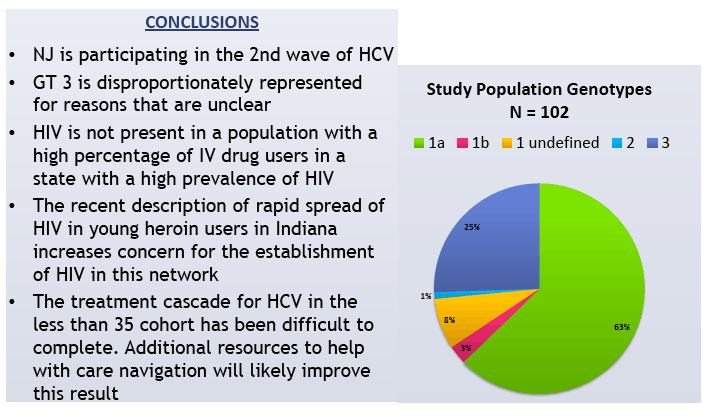
PROGRAM ABSTRACT
Background:
Young suburban heroin users have been described as the second wave of HCV in several US regions. NJ was not part of those initial reports.Princeton house (PH) is a psychiatric facility in suburban NJ with an active opioid detoxification program that recently instituted regular screening for HCV. We report our findings documenting a very high incidence of HCV and a surprising absence of HIV. We also report our experience in completing the HCV treatment cascade.
Methods:
Patients admitted to PH were encouraged to be screened for HCV. Patients with positive HCV results were evaluated to assess the presence or absence of infection, the genotype (GT), co-infections if any, and readiness for treatment.
Results:
From October 1, 2014 until March 31, 2015, 381 unique patients were tested for HCV. Of these, 173 (45%) patients were identified as HCV antibody positive, 1 was HBsAG positive, and 0 were HIV antibody positive. Ethnicities were 157 white, 7 black, 3 Hispanic, 2 other and 4 unknown. Clinical assessments were performed on 155 patients (90% of identified patients); 73 patients were women and 82 were men. Viral load testing was obtained in 131 patients (76% of identified patients). 23 patients were undetectable (UD) and 5 were < 1000 IU/ml. Genotypes were obtained in 64 patients with measurable virus (59%) (1a, 70%; 1b, 5%; 2, 3%; 3, 19% % and Mixed, 3% (Table 1)). The age distribution was skewed to < 30 years, with a mean of 34 and median of 30.6 (Figure 1) . Linkage to care was difficult. Of the first 155 patients, 9 (6%) patients returned for treatment and 3 of those are currently receiving treatment.
Conclusion:
NJ is participating in the second wave of HCV and GT 3 is disproportionately represented in this population for reasons that are unclear. Also remarkable is the complete absence of HIV in a population with a high percentage of IV drug users in a state with a high prevalence of HIV. The recent description of rapid spread of HIV in young heroin users in Indiana increases concern for the establishment of HIV in this network as well. Finally, the treatment cascade for HCV in this group of patients has been difficult to complete. Additional resources to help with care navigation will likely improve this result.
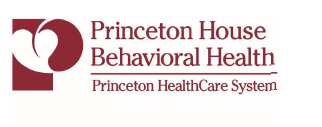
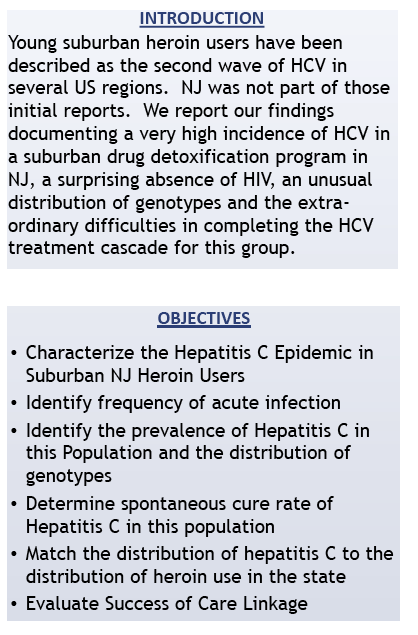

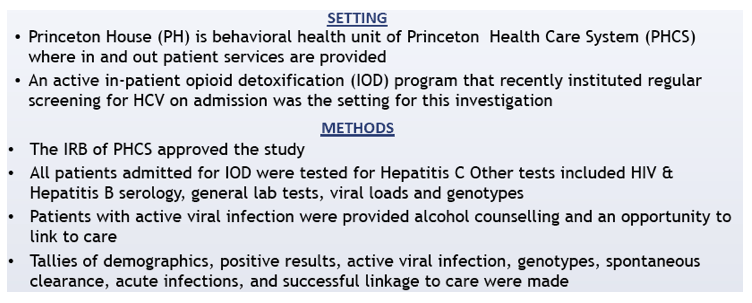
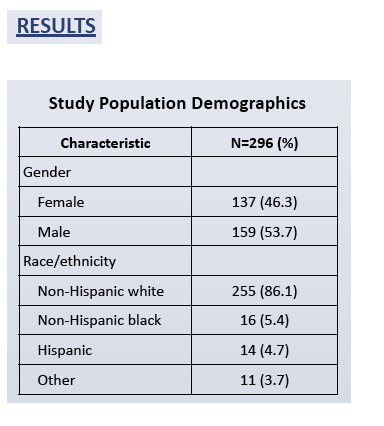
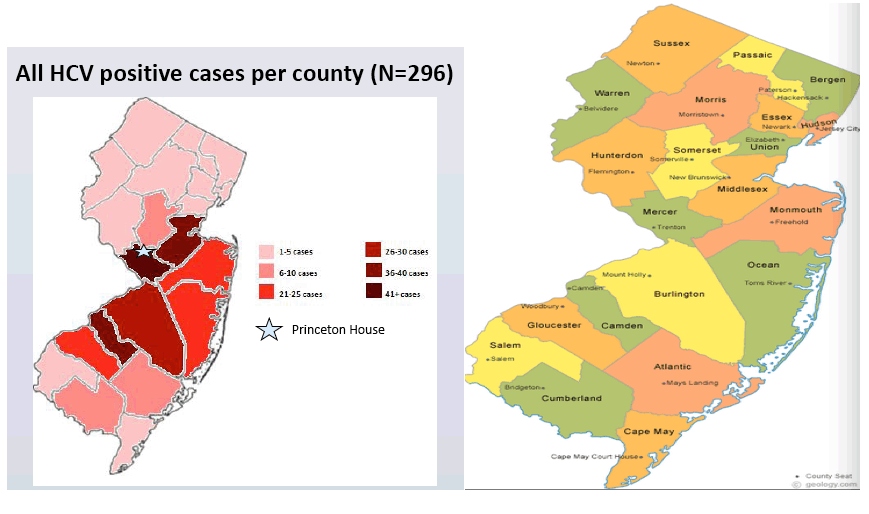
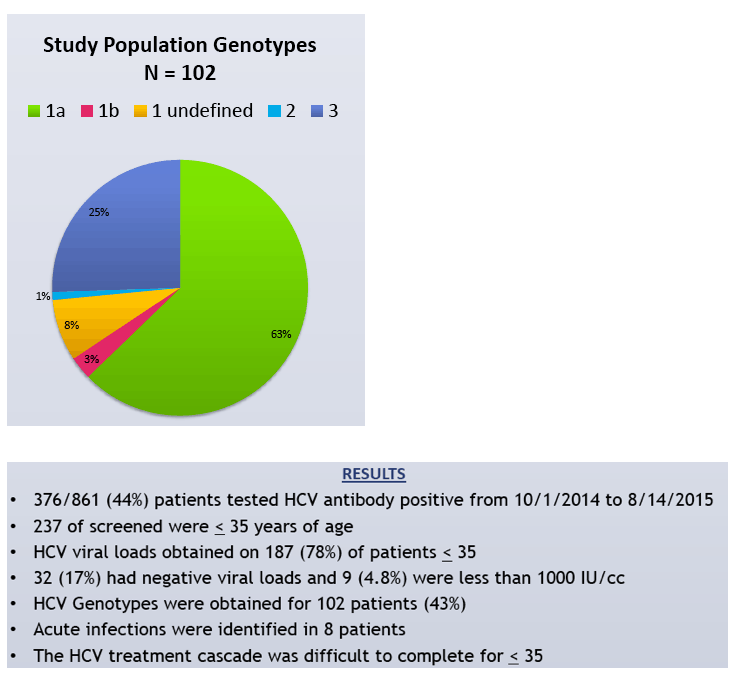
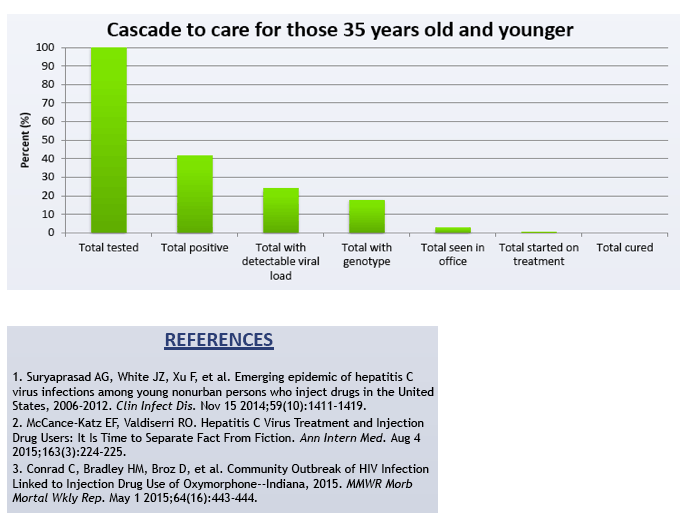
|
| |
|
 |
 |
|
|